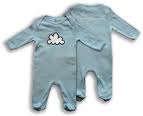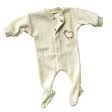 Dressing and undressing your newborn has been something you’ve probably been excited about for nine months!
Dressing and undressing your newborn has been something you’ve probably been excited about for nine months!
However, actually doing it can be tricky and it’s normal to feel nervous about handling such a tiny person and getting them ready for the day – just how do you get all those wiggly little limbs into that tiny babygrow?
Don’t worry! Here at CCIF we show you the easiest way to get your little person in and out of their clothes.
On average your newborn will need about two- three changes of clothes every day – so you’re in for plenty of practice! This is because of little accidents (from both ends) that tend to go everywhere in those early days!

Although some babies don’t like being dressed and undressed, persevere – they tend to get used to it as they get older, so don’t worry if your baby cries and screams the minute you start dressing them!
To keep your stress-levels to a minimum (and your baby’s) try and make sure you’re quick and fairly smooth in your movements and that the room your dressing your baby in is warm, and the surface your dressing them on is soft.
Lets do it!
1. Get everything ready that you’ll need so it’s close to hand when you need it.
2. After you’ve topped and tailed your baby, put her nappy on and then start with the vest.
As newborns have very little head control, her head will flop (but not harmfully) unless it’s supported. So, make sure her head is resting on something – be it changing mat or your hand.
Scrunch up the vest and stretch the neck as wide as possible, so that you can slip it on in one go.
Support her neck with one hand, and then ease the vest over her head, without letting it touch her face. This may sound like you’ve got to have as many arms as a friendly octopus, but with practice, you’ll be able to do this easily.
It’s basically the same principal for the arms. Hold the armhole open as wide as you can, then concertina the sleeve up and ease your baby’s hand through the sleeve, poking your hand through the opposite end makes things lots easier! Guide the arm through and straighten the vest down her body.
Do exactly the same with the other sleeve, and then do up the fastenings between her legs.
 3. Lay out a bodysuit and place your baby on top- this is the easiest way of getting that tiny, wriggly body into it! Start with the arms- this is easiest.
3. Lay out a bodysuit and place your baby on top- this is the easiest way of getting that tiny, wriggly body into it! Start with the arms- this is easiest.
Like with the vets, scrunch up the sleeves and put your hand through the opposite end, guiding your baby’s arm through.
With the legs, take each leg of the stretchsuit and gently ease your baby’s leg into it. Do the same with the other leg.
Finally do up the fastenings.
It may sound tricky, but with lots of practice it’ll come second nature and you’ll find yourself changing clothes like an expert!
 Choosing clothes
Choosing clothes
It’s hard not to go crazy when you go shopping for you newborn. There are so many lovely outfits out there, that it’s hard not to buy things you really don’t need!
Pick outfits that are practical and comfortable – and yes, go crazy and buy a couple of fiddly outfits if you really want to, as you’ll soon be super-duper at changing your baby!
As a general rule:
1 Avoid tight necklines as most babies hate stuff pulled down over their heads, try and pick clothes which do up at the front.
2 Zips or front fastenings should be generous enough so you don’t have to bend your baby’s legs double to get them into the suit.
3 Avoid frills round the neck – they’ll get covered in dribble and food and will irritate your baby’s chin.
4 Make sure the feet of all in one suits, socks and tights have enough room. Too tight, and they could be uncomfortable for your baby’s feet.
5 Soft, stretchy fabrics are comfortable to wear and easier to dry than denim, cord or other tough fabrics.
6 Avoid open lacy-patterned cardigans and jumpers – little fingers can easily get caught in the holes.
7 Choose stretchsuits with fastenings down both legs, so you don’t have to take the whole thing off every time you change a nappy.
8. choose ‘season appropriate’ clothes! Yes, that gorgeous summer stretchsuit is in the sale, but will your baby be warm enough in it?
9. Ensure you have enough outfits so you don’t end up having to wash every other day!
10. Second hand is fab- you don’t have to spend a fortune on new clothes. There are lots of lovely seconds at charity shops and nearly new sales. Remember to wash them in a soft washpowder such as Fairy, so they’re nice and clean, and soft for your newborn.








